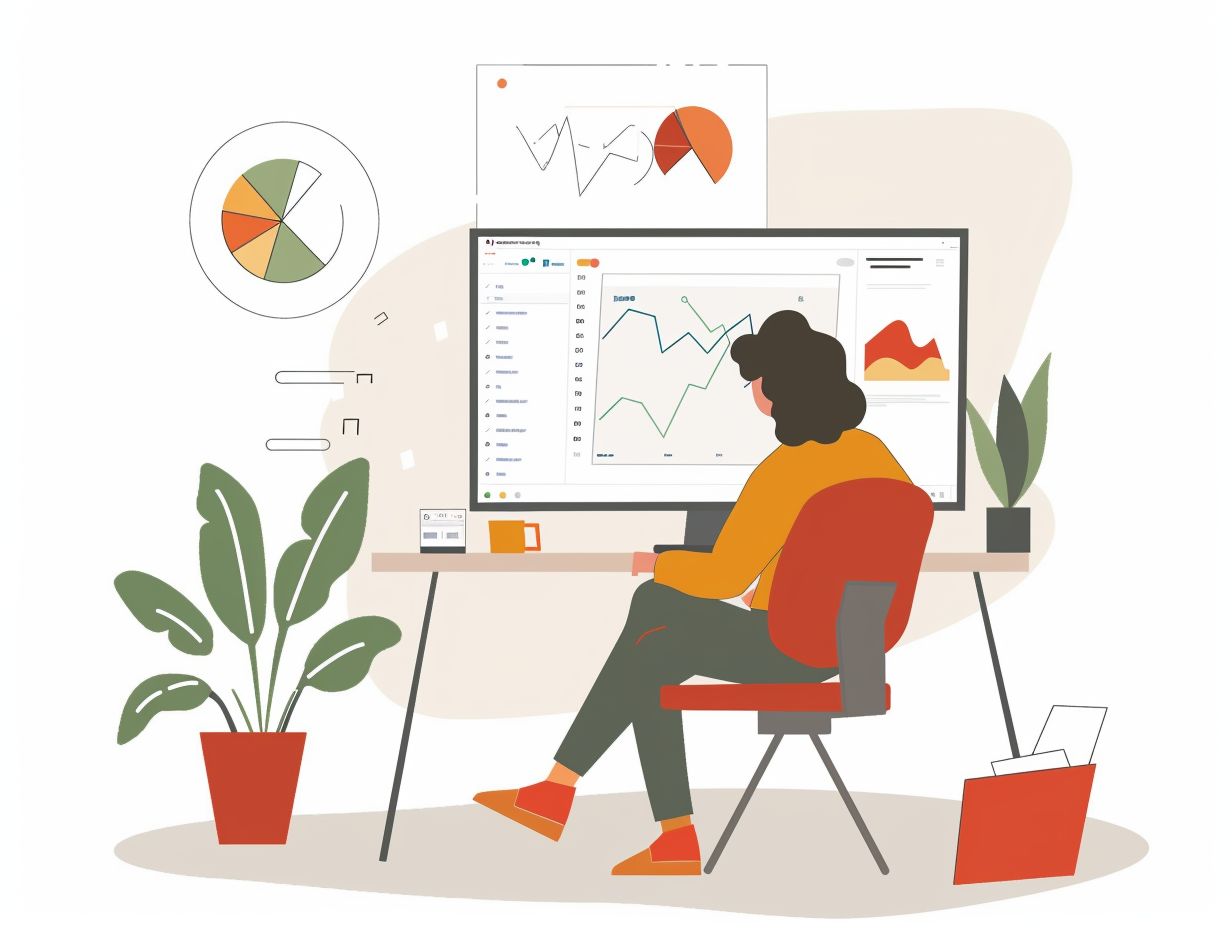Tips for Using Google Slides as a Storytelling Tool
This article will guide you on using Google Slides to enhance your storytelling skills with technology. It provides instructions on creating a new presentation, selecting themes, and captivating your audience through visual elements.
Additionally, it demonstrates how to incorporate interactive features like links and videos, as well as enhancing the narrative flow of your story to maintain viewer engagement.
Key Takeaways:
What is Google Slides?
Google Slides is a web-based presentation program developed by Google LLC, enabling users to create and edit presentations online without the need for specific software installation. Recognized for its real-time collaboration features, Google Slides offers a seamless experience for individuals and teams to collaborate on creating, editing, and presenting presentations. Consequently, the tool is widely used for group projects, team meetings, and educational purposes.
Being cloud-based, users can access their presentations from any device with an internet connection, making it one of the most flexible and convenient options available today. Moreover, Google Slides excels in enabling interactive storytelling through its diverse range of customizable templates and themes, along with the ability to seamlessly integrate multimedia content. This functionality give the power tos users to craft engaging and visually compelling presentations suitable for diverse audiences.
Why Use it for Storytelling?
Google Slides offers a user-friendly platform for digital storytelling, allowing students to participate in interactive storytelling experiences that foster creativity and cater to the preferences of 21st-century learners.
The interactive features of Google Slides, including animations, audio integration, and seamless collaboration functions, give the power to students to develop captivating narratives that captivate audiences and stimulate discussions.
Emphasizing visual storytelling and dynamic presentation techniques, educators can leverage Google Slides to encourage active student involvement and enhance engagement. This aligns with contemporary educational standards that emphasize the importance of nurturing creativity, effective communication, and collaboration as essential skills for students to excel in the digital age.
Getting Started with Google Slides
To begin using Google Slides, visit the Google Slides website, log in with your Google account, and create presentations following Misty Kluesner’s step-by-step instructions.
Creating a New Presentation
After creating a new presentation on Google Slides, the next steps include:
- Determining the purpose of your digital storytelling journey
- Seeking inspiration from thought leaders like Mike Rowe
- Utilizing Adobe Spark
- Initiating the process of structuring the narrative by creating a title slide
The key to creating engaging and visually appealing slides is to incorporate decision boxes that promote audience interaction and maintain a cohesive flow throughout the presentation. Graphics produced through Adobe Spark assist the presenter in enhancing their points visually. Curated content should align with the overarching storyline, achieved by constructing slides that progress logically. Well-organized slides integrating text, images, and multimedia elements can reinforce the content and enhance audience engagement.
Choosing a Theme and Layout
In Google Slides, the theme and layout play a crucial role in shaping the visual ambiance of your digital storytelling experience. Google Slides provides professional themes, while other platforms may offer themes with a comic book style. Themes are key to captivating your audience and effectively conveying your message.
Whether you prefer a sleek, minimalist look or a bold, vibrant design, Google Slides offers themes to suit various styles. Customization options, such as changing the color scheme, fonts, and background images, enable users to create a unique and cohesive presentation.
Features like duplicate slide functionality streamline the process and ensure consistent results across your presentation. Platforms like Slide Carnival offer users an extra creative boost with access to a wide range of pre-designed templates for different themes.
Using Visuals to Tell Your Story
In Google Slides, visual elements play a crucial role in storytelling by enabling users to incorporate dynamic animations, colorful images, and artistic filters, akin to those found in the Prisma App. These elements help in enhancing audience engagement and adding impact to the storytelling process.
Adding and Formatting Images
Incorporating images into your Google Slides presentation enhances visual appeal and serves as a powerful tool for conveying concepts and capturing the attention of viewers. It is essential to include captivating images in your Google Slides to create an engaging and informative presentation.
Selecting high-quality images that complement your message and resonate with your audience is crucial when adding images to your Google Slides. Properly resizing images to fit the slide ensures clarity and prevents distortion.
Maintaining consistency in styles and themes across your images helps to uphold a professional appearance. Applying proper formatting techniques such as adjusting transparency, adding borders, and aligning images effectively contributes to a cohesive and refined visual story in your slides.
Choosing the appropriate images and positioning them thoughtfully can significantly impact how well and positively your message is received by your audience.
Using Charts and Graphs
In Google Slides, charts and graphs are utilized to present data-driven insights and statistical information in a visually appealing manner, enabling storytellers to effectively convey complex ideas and engage their audience with informative visuals. These visual elements provide flexibility to presenters in meeting the specific needs of their audience. Customization options for the color, font, and style of these visuals enhance the overall presentation, making it more captivating and memorable. By incorporating various chart types like bar graphs, pie charts, and line graphs, different aspects of the data such as trends, comparisons, and relationships can be effectively showcased, enabling viewers to easily and quickly grasp the information.
Engaging Your Audience with Interactive Features
Creating interactive storytelling experiences on Google Slides can engage audiences by integrating multimedia elements like embedded videos, interactive links, and QuickTime screen captures. These immersive narratives captivate viewers and encourage active participation.
Adding Links and Videos
Enhancing your Google Slides presentation with links to external resources and embedded videos can elevate the storytelling experience, offering additional context, visual stimuli, and multimedia content that enhances audience engagement and comprehension.
By incorporating hyperlinks into slides, viewers can easily access external articles, websites, or resources that delve deeper into the presentation’s topic. Embedding videos allows for the integration of dynamic visual elements directly into the presentation, providing a dynamic contrast to static slides.
Careful selection of videos that align with the narrative flow and emphasize key points is essential. To ensure optimal audience attention and prevent information overload, it is advisable to limit the number of videos and keep them short in duration.
Using Animations and Transitions
Animations and transitions in Google Slides enhance storytelling presentations by adding dynamic effects and visual interest. Animations create interactive visual elements that aid audiences in grasping key points and maintaining interest.
Transitions smoothly guide the audience from one slide to the next, ensuring continuous engagement. Entrance, exit, and emphasis animations bring text, images, and shapes to life on a slide, drawing attention to essential areas.
Transition effects like fades, dissolves, and slides smoothly transition between slides, keeping the audience engaged throughout the story. It is essential to use these features judiciously and subtly.
Animation timings and delays are utilized to build suspense, highlight critical elements, and enhance the overall narrative structure of storytelling presentations.
Tips for Effective Storytelling with Google Slides
Google Slides can enhance storytelling through the creative integration of various innovative storytelling techniques and features of the tool. These include the following key aspects:
- Collaborative editing: enables multiple users to collaborate on a presentation, facilitating the communication of more creative ideas and the integration of diverse viewpoints into the story.
- Creative filters: can be utilized within the tool to heighten the emotional impact on the audience and make stories more engaging.
- Multimedia integration tools: such as WeVideo can be seamlessly incorporated into the Google Slides platform, simplifying the process of adding multimedia content to captivate viewers and pique their interest.
Creating a Narrative Flow
Establishing a cohesive narrative flow in your Google Slides presentation is crucial to take the audience on a journey with you, incorporating elements of storytelling structure, character development, and thematic resonance akin to Hamilton.
A narrative flow that encompasses a beginning, middle, and end captivates the audience. Just as Hamilton intertwines historical events with emotional narratives, a presentation that follows a linear story arc can deeply engage the audience. Each slide functions as a scene in your presentation, building upon the previous one to craft a seamless visual story. Characters, such as personas or case studies, are integrated into your presentation to humanize the content and evoke emotional responses from the audience.
Incorporating Text and Audio
Utilize text and audio elements in Google Slides to enhance communication effectiveness and storytelling impact by incorporating compelling narratives, audio cues, and educational content insights similar to strategies employed by Khan Academy’s platform.
The integration of text and audio components in presentations enables a dynamic approach to engaging the audience, providing a comprehensive toolkit for delivering information effectively. Thoughtfully crafted narratives can captivate listeners and ensure that they not only hear but also comprehend the message being conveyed.
By incorporating audio elements, interaction and reinforcement of key points can be enhanced. Educational content strategies observed on platforms like Khan Academy provide valuable insights on structuring content for optimal effectiveness and integrating interactive elements to enrich the learning experience.

Frequently Asked Questions
What is Google Slides and how can it be used as a storytelling tool?
Google Slides is a free, web-based presentation software that allows users to create, edit, and collaborate on slide presentations. It can be used as a storytelling tool by incorporating multimedia elements, such as images, videos, and audio, to enhance the story being told.
How can I get started using Google Slides for storytelling?
To get started, simply visit the Google Slides website and sign in with your Google account. From there, you can create a new presentation or upload an existing one to begin telling your story.
Are there any tips for making my Google Slides presentation more effective as a storytelling tool?
Yes, here are a few tips to make your Google Slides presentation more effective as a storytelling tool: use high-quality images and videos, limit the amount of text on each slide, use transitions and animations to enhance the story flow, and practice your presentation before sharing it with others.
Can I collaborate with others on a Google Slides presentation for storytelling?
Yes, Google Slides allows for real-time collaboration, meaning multiple users can work on the same presentation at the same time. This is great for group storytelling projects or for receiving feedback and suggestions from others.
Are there any additional features in Google Slides that can help with storytelling?
Yes, Google Slides offers a variety of features that can help enhance your storytelling, such as the ability to add hyperlinks, create interactive polls and quizzes, and even add speaking notes for each slide to help guide your presentation.
Can I access my Google Slides presentation from any device?
Yes, Google Slides is a cloud-based program, so you can access your presentation from any device with an internet connection. This makes it easy to work on your presentation on-the-go and share it with others for viewing.










